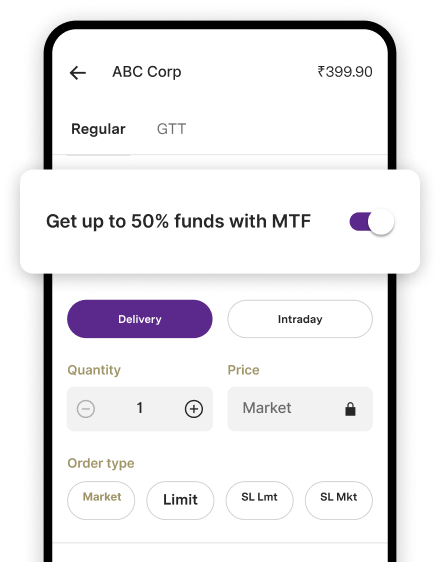In the ever-evolving world of digital transactions, ensuring safety and security has become a priority. A One Time Password or OTP, does exactly that by authenticating users and validating transactions.
This article glances at the concept of OTPs, how they work and their role in safeguarding online transactions.
What is a One Time Password (OTP)?
A One Time Password (OTP) is a unique and temporary code which authenticates users during specific transactions. It typically comprises four to six digits and is sent to the user's registered mobile number or email address. It ensures that only the authorised user can access the account or complete a transaction and does so by providing an additional layer of security. It is also known as two-factor authentication or 2FA.
How does an OTP work?
The OTP system employs algorithms which generate random valid codes for a limited period of time and there are three primary methods of doing so.
Time-based OTP (TOTP):
This method generates a new OTP at fixed intervals, usually every 30 to 60 seconds. The server and user device synchronise their clocks and share a secret key and current time to generate the OTP.
HMAC-based OTP (HOTP):
OTP here is generated by sharing a secret key and counter value. The counter value is stored by the user device as well as the server. It keeps them synchronised and increments when a new OTP is required.
SMS-based OTP:
In this method, the OTP is sent to the user's registered mobile number via Short Message Service or SMS. It is also the most common method used in India.
Importance of OTPs
OTPs play the critical role of safeguarding sensitive user information in the digital domain. Here are some key reasons which make OPTs indispensable.
Enhanced security:
OTPs can protect online accounts and transactions even if a malicious entity obtains the user's login credentials because they act as an additional layer of security.
Minimising fraud: OTPs authenticate the user by insisting on the temporary code. This helps curb fraudulent activities like identity thefts and phishing attacks.
User trust:
OTPs help increase user trust in digital platforms by reassuring them about the safety of their transactions and data.
Applying OTPs
OTPs provide a secure access to digital services and are widely used in various sectors. Some of its common applications include:
Banking and financial services:
In India, banks and financial institutions use OTPs as an additional security measure to authorise transactions.
E-commerce platforms: Online shopping sites use OTPs to verify user identity at the time of payment and ensure that the purchaser is the legitimate account holder.
Online services:
Digital services like email, social media platforms and cloud storage providers utilise OTPs. This feature protects user accounts from unauthorised access.
Government portals:
Government portals like the Income Tax e-Filing portal and Aadhaar-based services employ OTPs to authenticate users and safeguard sensitive information.
How to safely use OTPs
OTPs are a robust security mechanism but breaches are possible and users must exercise caution. Here is a list of practices to ensure the safe use of OTPs.
Do not share OTPs:
Do not share your OTPs with anyone, even if they claim to be from a trusted organisation. Fraudsters often employ social engineering techniques to trick users into revealing their OTPs. This can lead to unauthorised access or financial losses
Keep mobile devices secure:
Keep your security software up-to-date and maintain a strong passcode or biometric authentication. This prevents unauthorised access to SMS based OTPs even if the device is lost or stolen.
Verify the sender:
Always check if the sender is a legitimate service provider before entering the OTP. This will help you avoid phishing scams where attackers impersonate trusted entities to obtain sensitive information.
Use encrypted communication channels:
Opt for encrypted communication channels when receiving OTPs through email or instant messaging apps. This will protect your information from potential interception.
Be cautious of unsolicited OTPs:
Look out for unsolicited OTP messages and contact the service provider immediately if you find one. It may indicate unauthorised login attempts or fraudulent transactions.
Limitations of OTPs
Despite their widespread use and proven effectiveness, OTPs have certain limitations including:
Reliance on SMS: The SMS-based OTP system relies on mobile network connectivity which can be a problem in areas with weak or no signal. Additionally, network congestion or technical issues may lead to delayed OTP delivery and cause inconvenience to users.
Vulnerability to SIM swapping attacks:
In SIM swapping attacks, fraudsters impersonate the victim and obtain a new SIM card with the victim's phone number. The attacker then receives the victim's OTPs, thereby bypassing the security measure.
Human error:
Users may inadvertently share their OTPs, fall victim to phishing scams or enter their OTPs on malicious websites, leading to a potential security breach.
Conclusion
One Time Passwords (OTPs) are critical in the battle against online fraud and unauthorised access. They provide an additional layer of security through two-factor authentication and help protect sensitive information and transactions across sectors.
As users increasingly rely on digital services, understanding the working mechanism, applications, and safe usage of OTPs becomes more important to maintain a secure online environment. However, it is vital to also recognise the limitations of OTPs and adopt complementary security measures to fortify the defence against potential threats.
Disclaimer
The investment options and stocks mentioned here are not recommendations. Please go through your own due diligence and conduct thorough research before investing. Investment in the securities market is subject to market risks. Please read the Risk Disclosure documents carefully before investing. Past performance of instruments/securities does not indicate their future performance. Due to the price fluctuation risk and the market risk, there is no guarantee that your personal investment objectives will be achieved.

